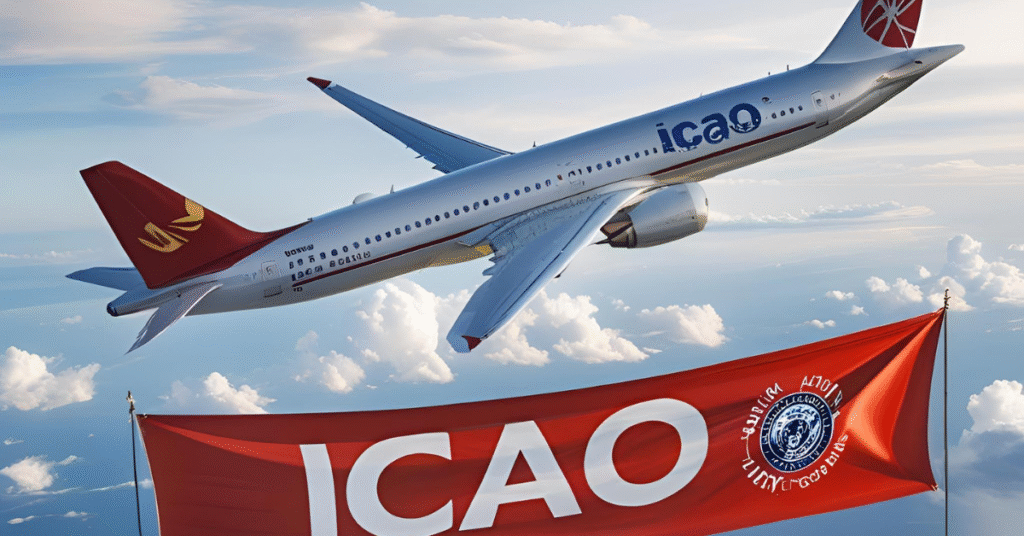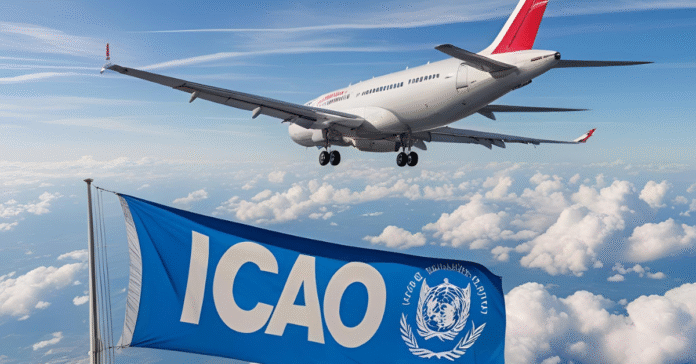Read the latest updates to ICAO Aviation Standards to to improve safety, navigation, and communication while promoting sustainability and advanced technology for future air travel.
Overview
The International Civil Aviation Organization (ICAO) announced important updates to the standards for global aviation safety and efficiency recently. This update is crucial as aviation technology continues to evolve rapidly, leading to the need for new regulations and frameworks that ensure safe operations.
The ICAO’s Council has modified the Annexes of the Chicago Convention, focusing on key areas like communication, navigation, airport operations, and meteorological services.
President Salvatore Sciacchitano emphasized that the new standards reflect modern technologies and promote their usage, ensuring that future aviation systems are introduced safely while enhancing current infrastructure.
Among the notable changes is the introduction of Advanced Receiver Autonomous Integrity Monitoring (ARAIM), which will improve navigation accuracy, especially in regions lacking traditional navigation aids.
The updates also enhance aviation communication security and reliability through cyber-resilient standards, paving the way for more effective digital infrastructure and data exchange between aircraft and air traffic control.
Moreover, the update lays out provisions for reducing aircraft weight through wireless connections between safety systems, ultimately helping lower fuel consumption and emissions.
New standards will improve airport operations by establishing performance-based requirements for obstacle management and strengthening ground handling safety assessments.
This update not only enhances the safety and efficiency of aviation but also aligns with ICAO’s broader vision for sustainable air connectivity worldwide.
Updates to ICAO Aviation Standards: Key Highlights

- Advanced Navigation: Introduction of Advanced Receiver Autonomous Integrity Monitoring (ARAIM) to improve satellite-based navigation precision, especially in areas lacking traditional navigation aids. This supports performance-based navigation, allowing for optimized flight routes that reduce time, cost, and CO₂ emissions.
- Enhanced Communication: Implementation of cyber-resilient standards for air-ground data exchange, facilitating a cost-effective transition to digital infrastructure and promoting the use of commercial off-the-shelf solutions.
- Aircraft Systems: Approval for wireless connections between onboard safety systems, reducing aircraft weight and fuel consumption without compromising safety.
- Airport Operations: New performance-based requirements for obstacle management, improved visual aids for pilots, and mandatory assessments of ground handling impacts to enhance safety and operational efficiency.
- Heliport Standards: Certification requirements for international heliports now include mandatory safety management systems, improving safety and efficiency, particularly in urban environments.ICAO
- Meteorological Services: Enhanced standards for aeronautical meteorological services, including better monitoring and forecasting of space weather and volcanic ash, and new protocols for digital information exchange.
Issued By:
International Civil Aviation Organization (ICAO)
Document Ref:
ICAO Update – New Standards April 2025
What’s New in the Latest Update to ICAO Aviation Standards?
The ICAO has introduced major revisions to international aviation standards aimed at improving safety, efficiency, and sustainability. A key feature of these updates is ARAIM, which enhances the precision of navigation systems, allowing pilots to navigate effectively in areas where traditional aids are not available. This is vital as performance-based navigation lets pilots choose routes that are quicker, cheaper, and produce less CO2.

Updates include enhanced cybersecurity standards for air-ground data exchange, which aim to streamline the transition to digital systems while ensuring secure and reliable communications. Inside the aircraft, the new guidelines promote wireless connections for safety systems, reducing the overall weight and therefore fuel usage.
Moreover, the ICAO has introduced performance-based requirements for managing obstacles around airports, ensuring that land use is optimized without compromising safety. This includes better visual aids for pilots and mandates for States to regularly evaluate ground handling safety. For heliports, new certification and safety management requirements will improve operations, which is particularly important in urban environments. Additionally, the enhanced meteorological services focus on accurate weather forecasting and monitoring, providing crucial information for flight planning.
Implications for Stakeholders
Airlines and Pilots: Need to adapt to new navigation and communication standards, requiring updates to training and operational procedures.
Airport Authorities: Must implement new obstacle management and visual aid standards, and conduct regular assessments of ground handling operations.ICAO
Heliport Operators: Required to comply with new certification and safety management system standards, enhancing operational safety in complex environments.
Meteorological Service Providers: Should upgrade forecasting capabilities and adopt new digital protocols for information dissemination
What is the background of this update to ICAO Aviation Standards?
The ICAO regularly evaluates and updates aviation standards to keep pace with advances in technology and operational practices.
The last significant update occurred several years ago, but given the rapid changes in technology and the increasing complexity of air traffic management, a revision was deemed necessary.
This update reflects the technological advancements in the field and the ongoing concerns about environmental sustainability.
Advocates for greener aviation practices have prompted a re-examination of standards, resulting in a focus on optimizing routes and reducing emissions through smarter navigation and operational efficiencies.
The need for more robust safety measures in response to emerging cyber threats has also factored into these updates, allowing aviation to continue evolving securely and sustainably.
Editor’s Insight

As the aviation industry witnesses unprecedented changes driven by technology, these new ICAO standards are a welcome response to the need for more effective and sustainable practices.
The shift towards digital systems and performance-based navigation marks a significant step forward, promising both safety and environmental benefits.
Pilots and airport managers will appreciate the emphasis on reducing weight through wireless systems, which aids in reducing costs and helps address environmental concerns.
Moreover, the enhanced regulations surrounding obstacle management and ground handling reflect a proactive approach to safety, something that is increasingly vital in today’s busy airspace.
As we move forward, it will be crucial for all stakeholders in the aviation sector to familiarize themselves with these changes and implement them effectively to improve overall safety and efficiency in air travel.
This update positions the aviation industry to meet future challenges head-on while adhering to strict international safety protocols.
Official Source
ICAO Newsroom – New ICAO standards for future air navigation and safety



